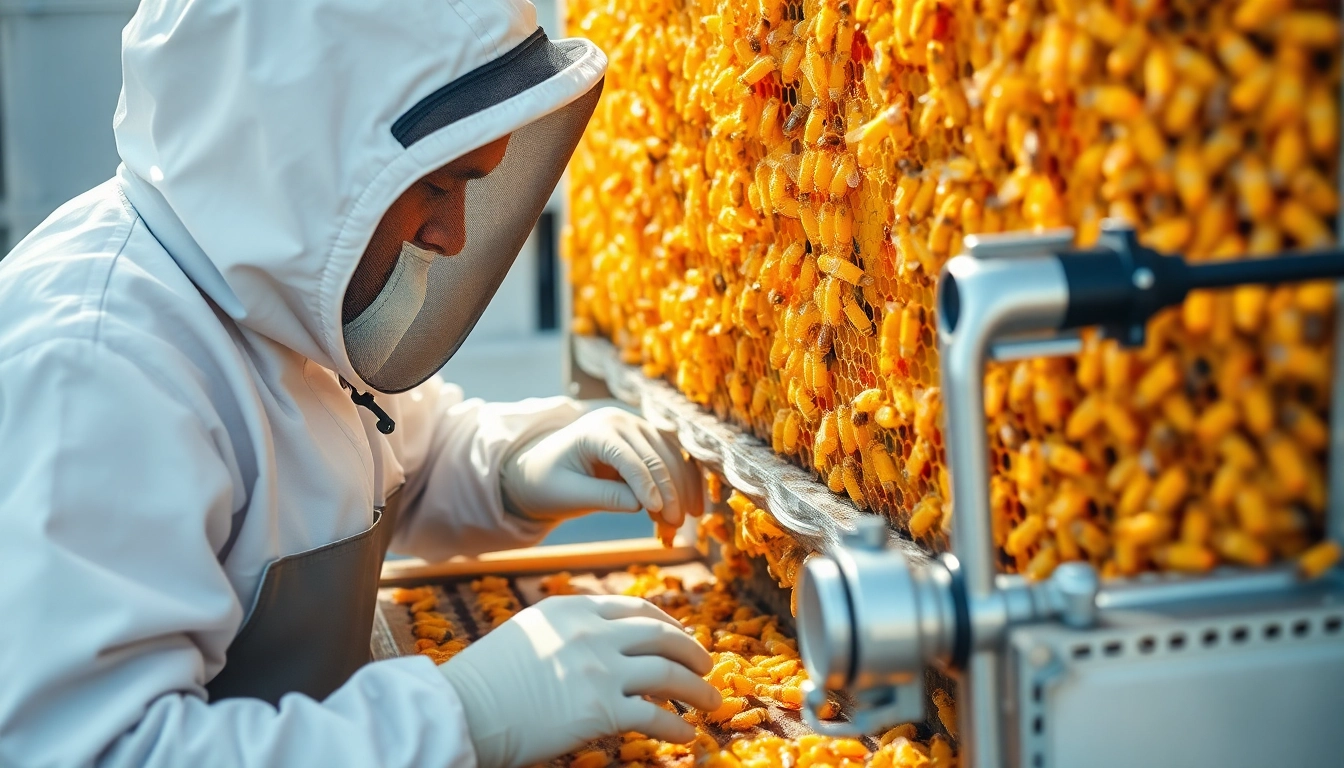Enhance Your Apiary with Top Material y Maquinaria para Apicultura for Optimal Honey Production
Introduction to Material and Machinery for Apiculture
In the world of modern beekeeping, the importance of high-quality material y maquinaria para apicultura cannot be overstated. With increasing demands for efficiency, sustainability, and product quality, professional apiculturists are investing in advanced equipment and durable materials to optimize their hive management, honey extraction, and overall apiary operations. This comprehensive guide delves into the essential components, technological trends, and best practices for selecting, implementing, and upgrading apicultural materials and machinery, ensuring your apiary remains competitive and productive in a rapidly evolving industry.
Understanding the Importance of Quality Materials and Equipment
The foundation of a successful apiary lies in utilizing top-tier materials and machinery. High-quality equipment enhances operational efficiency, ensures the health and safety of bee colonies, and guarantees the purity and quality of honey and other hive products. Durable materials such as stainless steel resist corrosion and contamination, while precision machinery minimizes processing time and preserves product integrity. Investing in proven, reliable tools also reduces operational downtime, lowers maintenance costs, and ensures compliance with food safety standards.
For instance, stainless steel support structures and antigoteo (anti-drip) systems are critical in preventing leaks and contamination, maintaining hygiene, and extending equipment lifespan. This attention to material quality is vital for scaling apiary operations from small hobby farms to large commercial enterprises.
Key Components in Modern Apiary Machinery
Support Antigoteo Stainless Steel Systems
Antigoteo systems made of stainless steel serve as critical components in honey and food-grade product handling machinery. Their resistance to corrosion and ease of cleaning make them ideal for maintaining hygiene standards. These systems help prevent product wastage caused by leaks and drips, ensuring purity and reducing contamination risks.
Food-Grade Drums and Buckets for Honey Handling
Large capacity drums, such as 300 kg and 75 kg models, designed for food-grade applications, facilitate efficient honey storage and transportation. Their smooth internal surfaces and secure lids prevent contamination and spoilage. Buckets like the 25 kg metal honey container offer versatility for smaller batch handling and processing.
Specialized Cedazo and Sello for 300kg Drums
Tools like cedazo (sieve) for sealing and draining in 300 kg drums ensure that honey is filtered appropriately, removing impurities while maintaining a hygienic seal. Proper sealing and filtering are essential for maintaining honey quality during storage and transportation, preventing spoilage, and complying with food safety regulations.
Choosing the Right Machinery for Your Apiary Needs
Large Capacity Drums: Features and Benefits
High-capacity drums, such as the 300 kg and 75 kg models, are indispensable for commercial operations. Features like reinforced construction, corrosion-resistant coatings, and secure closure mechanisms allow for safe, hygienic storage and transport of honey. These drums often come with fitting accessories for attaching pumps and filters, streamlining the processing pipeline.
Tools for Honey Extraction and Processing
Efficient honey extraction machinery includes manual and electric extractors, centrifuges, and honey pumps. Equipment such as desoperculadores (uncapping machines) and prensas (presses for opercula) allow for rapid and hygienic honey harvesting. Modern machinery incorporates automation features that reduce manual labor and improve extraction yields.
Maintenance and Safety Considerations
Routine cleaning, regular inspection, and appropriate staff training are critical for maintaining machinery longevity. Use of food-grade lubricants, corrosion-resistant materials, and safety guards minimize occupational hazards and product contamination, ensuring compliance with health standards.
Implementation and Best Practices in Apiculture
Setting Up a Modern Apiary with Quality Materials
Start by designing your apiary layout focusing on accessibility, safety, and hygiene. Select durable materials—such as high-grade woods, stainless steel, and food-grade plastics—and invest in machinery tailored to your operation scale. Proper installation of support systems, honey handling equipment, and filtration tools establishes an efficient workflow.
Operational Tips for Maximizing Efficiency
Implement standardized procedures for hive inspection, honey harvesting, and equipment cleaning. Use automation where possible, such as electric extractors and pumps, to reduce manual effort and improve throughput. Maintaining regular calibration of scales, filters, and pumps ensures consistency and quality control.
Monitoring Performance and Ensuring Product Quality
Track key performance indicators like honey yield per hive, extraction time, and quality parameters (moisture content, sucrose levels). Regular microbiological testing, coupled with equipment inspections, helps maintain high standards and preempt contamination issues.
Future Innovations and Upgrading Your Apiary Equipment
New Materials and Machinery on the Horizon
Advances such as antimicrobial coatings, lightweight composites, and bio-based plastics are redefining apicultural materials. Emerging machinery includes automated hive monitors, robotic extractors, and advanced filtration systems that enhance efficiency and product quality.
Integrating Technology for Better Data Management
Digital sensors, IoT devices, and data analytics enable real-time monitoring of hive conditions, production metrics, and equipment performance. These tools facilitate informed decision-making and predictive maintenance, minimizing downtime and maximizing productivity.
Investing in Sustainable and Eco-Friendly Apicultura Solutions
Sustainable materials like recycled plastics and biodegradable coatings are becoming more prevalent. Solar-powered machinery and energy-efficient systems reduce environmental impact while lowering operational costs. Emphasizing eco-friendly practices aligns with consumer demand for sustainable honey and bee products.

